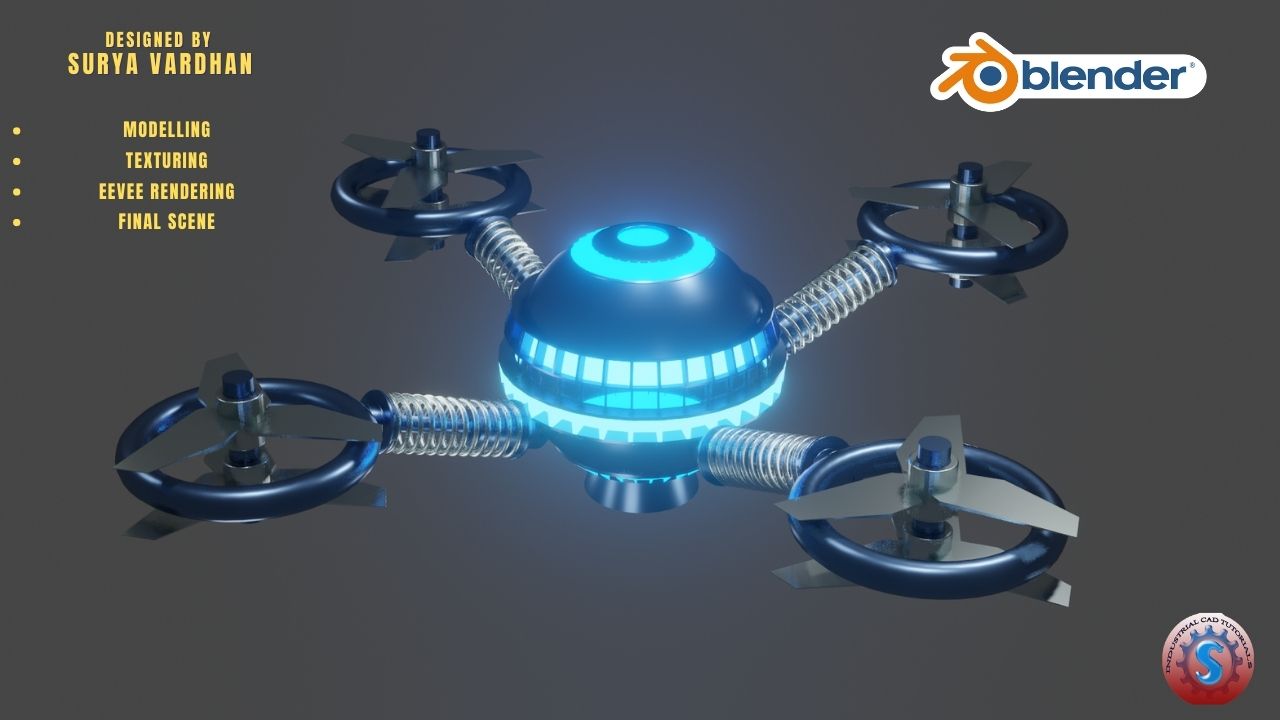Developing a 3D sci-fi space drone in Blender can be an exciting and creative project. Blender is a powerful and versatile 3D modeling and animation software that is perfect for this type of endeavor. Here’s an introduction to how you can get started with creating your own 3D sci-fi space drone:
1. Conceptualization and Design:
- Begin by brainstorming and sketching your drone’s design. Consider its purpose, whether it’s a reconnaissance drone, cargo transporter, or combat vehicle. Think about the drone’s shape, size, and the sci-fi elements you want to incorporate.
2. Reference Gathering:
- Collect reference images and materials to inspire your design. Look for sci-fi artwork, space-themed concepts, and real-world space-related designs. These references will help you create a more realistic and visually appealing model.
3. Setting up Blender:
- Download and install the latest version of Blender if you haven’t already. Open the software and get familiar with its interface, including the 3D viewport, properties panel, and various modeling tools.
4. Modeling:
- Start by creating the basic shape of your drone using primitive objects like cubes, cylinders, and spheres. Use Blender’s modeling tools to shape and refine your model.
- Extrude, bevel, and subdivide the surfaces to add details and complexity to your drone. Consider creating various components such as antennas, thrusters, sensors, and weaponry.
5. Texturing:
- Create or find suitable textures for your drone. Use image textures to add color, surface details, and patterns to your model. UV unwrapping is a crucial step to properly map these textures onto your 3D object.
6. Materials and Shading:
- Assign materials to your drone’s components. Blender’s Node Editor is a powerful tool for creating complex materials, adding glossiness, metallic properties, and more to your model. Consider giving it a futuristic and metallic appearance.
7. Lighting and Environment:
- Set up lighting in your scene to highlight the drone and make it stand out. Experiment with different lighting sources and their intensities to achieve the desired effect.
- Create an environment or background that complements the space theme. This could be a starry sky, distant planets, or a sci-fi space station.
8. Animation (Optional):
- If you want your space drone to be more than just a static model, you can animate it. Create keyframes for movement, rotation, and any other actions you want your drone to perform.
9. Rendering:
- Configure your rendering settings, including resolution, quality, and file format. Choose between Blender’s built-in render engine (Cycles) or real-time rendering engine (Eevee) based on your project’s requirements.
10. Post-Processing (Optional):
- After rendering, you can further enhance your drone’s appearance in post-processing software like Adobe Photoshop or GIMP. Add special effects, lens flares, or color corrections to make your space drone look even more stunning.
11. Export and Showcase:
- Export your final 3D model as a common 3D file format (e.g., .obj, .fbx) for sharing or use in other software. Showcase your creation on 3D modeling platforms or in your portfolio.
Creating a 3D sci-fi space drone in Blender is a creative and technically challenging project. It’s important to continuously refine your skills, experiment, and iterate to achieve the best results. Don’t hesitate to seek tutorials and online resources to help you master Blender’s features and techniques.

